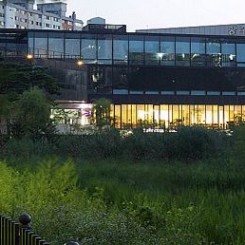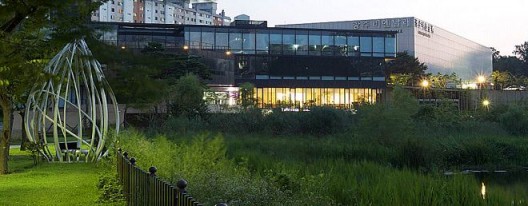[press Release]
- Multiple curator system to be employed instead of a system under a single artistic direction
- Venues including the Biennale Exhibition Hall, Asia Culture Center, and historical public spaces to be used for the exhibition
- The main theme of the Biennale is “Imagined Borders”
On August 11, the Gwangju Biennale Foundation initiated the 12th edition of the Biennale which employs the multiple curator system, while articulating the Biennale’s characteristics, which focus on the historicity and the spatial meanings of Gwangju. Based on the experiences accumulated over the past 23 years of the Biennale, the multiple curator system is expected to formulate diversified exhibitions that ruminate on both the past and the present of human civilization and explore alternatives for the future while re-illuminating the city of Gwangju.
Grounded on decades-long discourses and on-site curatorial experiences, these transitions have been made to, above all, represent the historicity and locality of Gwangju in a more effective way and to leave cultural relics for future generations of the local community.
The processes of on-site co-curating will instill new energy in the Biennale, setting up the synchronic (spatial) and diachronic (historic) pillars of the hosting city. The collective curatorship will embody a wealth of additional diverse ideas and discourses in the form of visual arts.
One of the plans is to discover the historical public spaces that are imbued with democratic, humanitarian and peaceful spirits throughout Gwangju – a goal that reflects the background of the origins of the Gwangju Biennale in 1995 – and link them to other exhibition spaces.
The Gwangju Biennale Exhibition Hall, located in Yongbong-dong, was originally built to heal the trauma of the May 18 Gwangju Democratic Movement (1980) and communicate its spirit in the form of art; it has hosted 1,414 artists and 7,640,000 audiences for the past 23 years. With its subsidiary sites, the role of the Biennale Hall as the main exhibition space and the symbolic meanings behind it will be emphasized further. With the Biennale Hall at the center, the Asia Culture Center, the Gwangju Museum of Art and other cultural and historic spaces will be used for exhibitions, reinventing the city as an enhanced site for visual art events. The citywide cultural belt will also contribute to the cultural tourism in the region.
Meanwhile, after curatorial research and two committee meetings, the Foundation had decided on “Imagined Borders” as the theme of the next Biennale.
“Imagined Borders,” a term appropriated from Benedict Anderson’s literature on nationalism titled Imagined Community, deals with the national and geopolitical reconstruction that has taken place on a global level. It will explore issues of politics, economy, and psychology, as well as matters of emotional concerns, of border/lessness, of existing inside/outside the border, and of being in-between the borders beyond geopolitical boundaries. Especially at a time when invisible yet iron borders – not dichotomous borders (e.g., between nations and generations) but the more complex borders among diverse elements – have emerged, the theme “Imagined Border” will provide an opportunity to reconsider the agenda of the global community of our times.
As an integral part of lively programmes related to the exhibition, the Gwangju Biennale Foundation will present the Monthly Gatherings, which includes GB Talks and Artist Studio Visit, and the Education Programme for schools and communities.

